I bet if you go to your kitchen cabinet right now and pick up the first food package you see, you’ll find the word “flavor” somewhere on the ingredient list. Am I right?
Yep, the processed food industry adds flavors to almost EVERYTHING. When a food is heavily processed with machinery in a factory, pumped full of preservatives, and poured into a package that gets shipped across the country to get stored on a shelf for months it loses flavor. That’s why there is a multi billion dollar flavor industry dedicated to creating chemicals that make all that processed food taste like… well… real food.
Not only do these flavors make fake food taste real, they also give it a special “kick” that keep you coming back for more. The natural and artificial chemicals that flavor manufacturers engineer are contributing to what David Kessler (former head of the FDA) calls a “food carnival” in your mouth. The inability to stop eating because the flavors they have synthesized trick your mind into wanting more and more.
Why do Americans eat more calories than any other industrialized nation? It’s not because we have more money or are more hungry. It’s because our food supply is chemically produced and enhanced with these “flavors” and it’s EVERYWHERE and we are being TARGETED.
You see, they don’t want you to have the full essence of the strawberry – they want you to only experience the best 1 millionth part of the taste – so you get “addicted” and keep having to go back for more and more, searching continuously for gratification – eating more of that product which in turns fills Big Food Companies pockets. The Big Food Companies are “hijacking” your taste buds one by one.
The term “flavors” on a package highly misleading. It sounds innocent and is on SO MANY products that we are desensitized to it. Flavor companies own these proprietary formulas… making it near impossible to find out exactly what’s in them. You’d like to think that “natural apple flavor” is just some juice extracted from an apple and inserted into the food. Nope. That “natural apple flavor” needs to preserved and stabilized and has agents added to help it mix well into a product. This is why flavors can contain upwards of 100 ingredients like propylene glycol, polysorbate 80, BHT, BHA… all considered “incidental additives” not required to be labeled by the FDA. The FDA doesn’t require companies to tell you what is in the flavors they use. It’s a complete mystery ingredient.
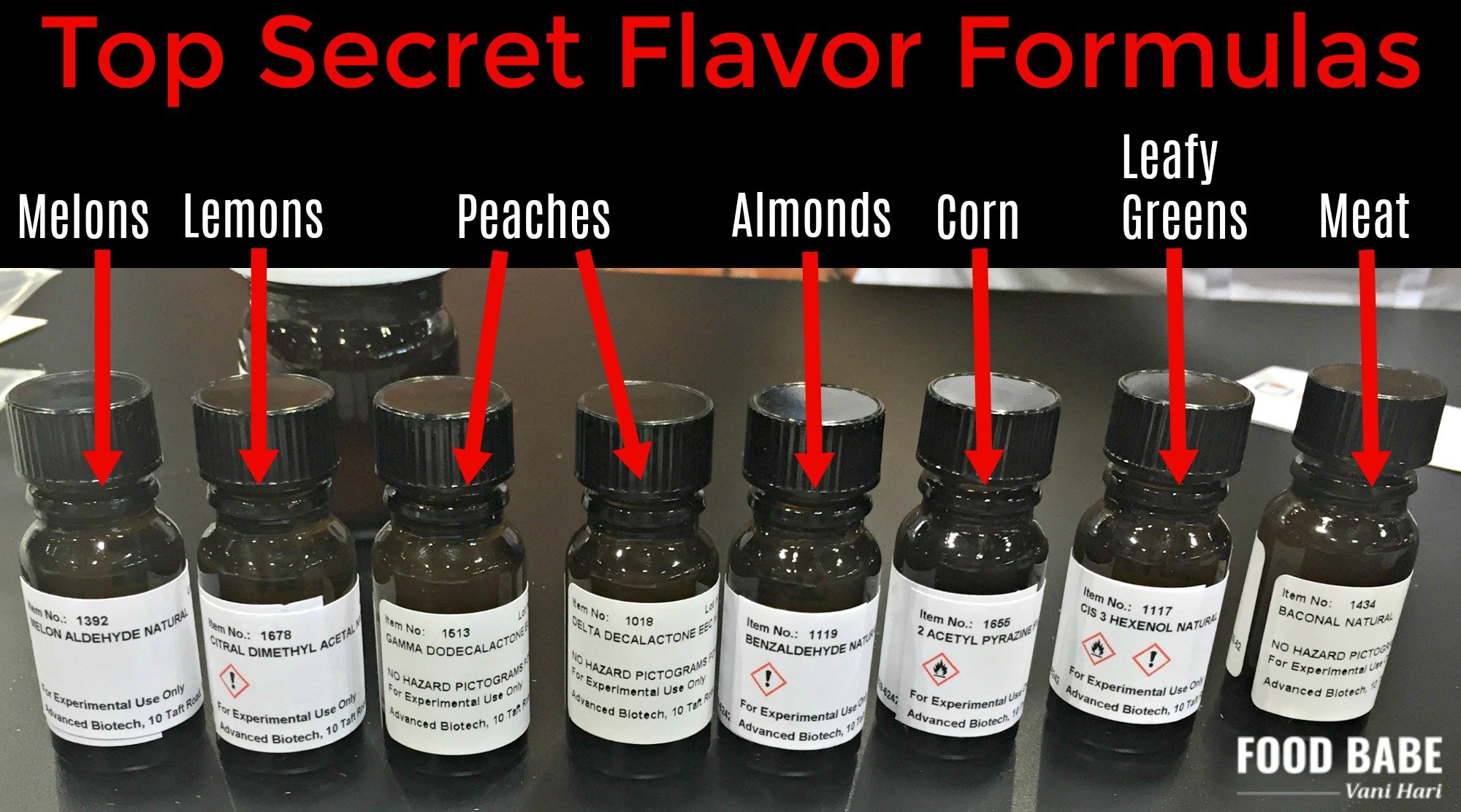
Who is overseeing the safety of flavors in our food? You may be surprised…
The fox is guarding the hen house. You see, a governmental or independent agency does not approve or oversee the safety of the food flavors. Instead, a flavor industry trade group, the Flavor and Extract Manufacturers Association (FEMA), has assembled their own “independent” panel of scientists who review and approve new flavors as Generally Recognized As Safe (GRAS). These scientists are paid by the FEMA trade group (who ultimately get their funding from flavor companies).
And, of course, these FEMA panel scientists are supposed to be independent and free of conflicts of interest, but many questions have been raised about their closed-door evaluations and lack of transparency with the public. The fact that this panel is assembled and paid for by a flavor company trade group is concerning to say the least, don’t you think?
Public advocacy groups have questioned FEMA’s processes and called on the FDA to ban certain flavor substances that have known links to cancer, but little has been done. Some chemicals used to make flavors, like Diacetyl (which is used to make buttery flavor), are highly dangerous for those that work around them… but we are supposed to eat them and be okay? Consumers want to know what’s in these flavors and what research has been done proving their safety, but we essentially get the door slammed in our faces when we ask.
The laws surrounding these flavors are lax to say the least, and companies don’t have to tell you much about what they really are. Labels on food typically just say “natural flavors” or “artificial flavors” and don’t explicitly tell you what differences are between them.
It’s good to know that there are some stark differences between artificial flavors, natural flavors, natural strawberry flavors, organic raspberry flavors, natural essences, organic extracts, etc… And while these are all largely the same, some of the flavors added to food are better than others.
Not all flavors are equal…
So, if you’re like me and want understand exactly what you’re eating and to know more about what these labels all mean, I created this Flavor Cheat Sheet below to break it all down.
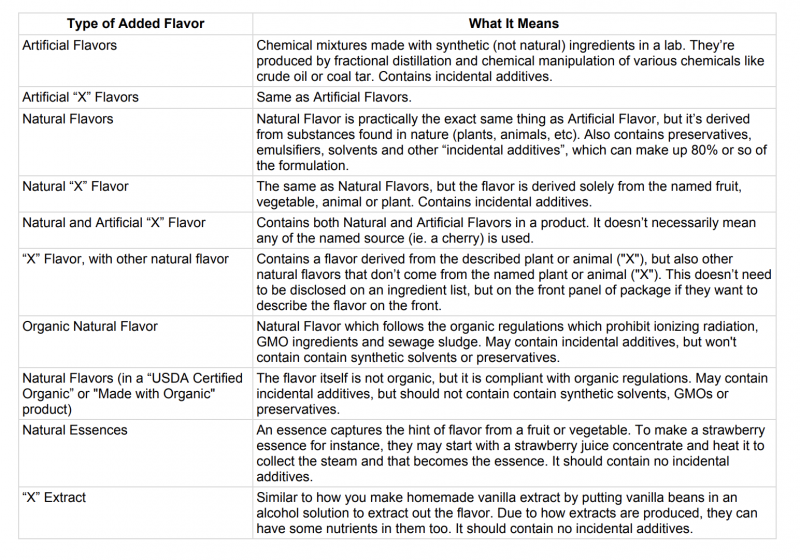
Now let’s go over some real world product examples, let’s start with the worst flavors in our food… Artificial Flavors.
Artificial Flavors or Artificial “X” Flavors
(Note: “X” stands for a specific flavor such as “Strawberry” or “Vanilla”)
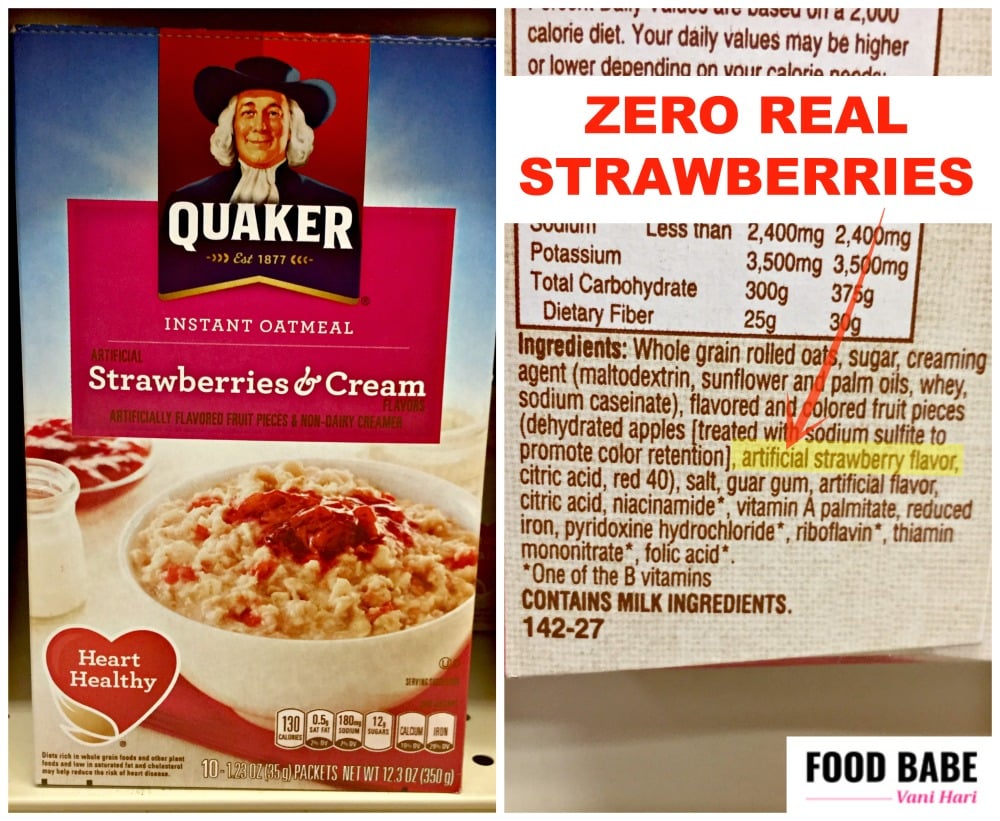
Artificial flavors are chemical mixtures made with synthetic (not natural) ingredients in a lab. They’re produced by fractional distillation and chemical manipulation of various chemicals like crude oil or coal tar. Artificial vanilla flavor can be made from wood pulp. With artificial flavors, chemists can make anything taste like a strawberry without any actual strawberries (or any actual food for that matter), which is a really horrible thing if you care about health. But it’s a great thing for food manufacturers because artificial flavors are much cheaper than using real food (or even natural flavors).
Natural Flavors
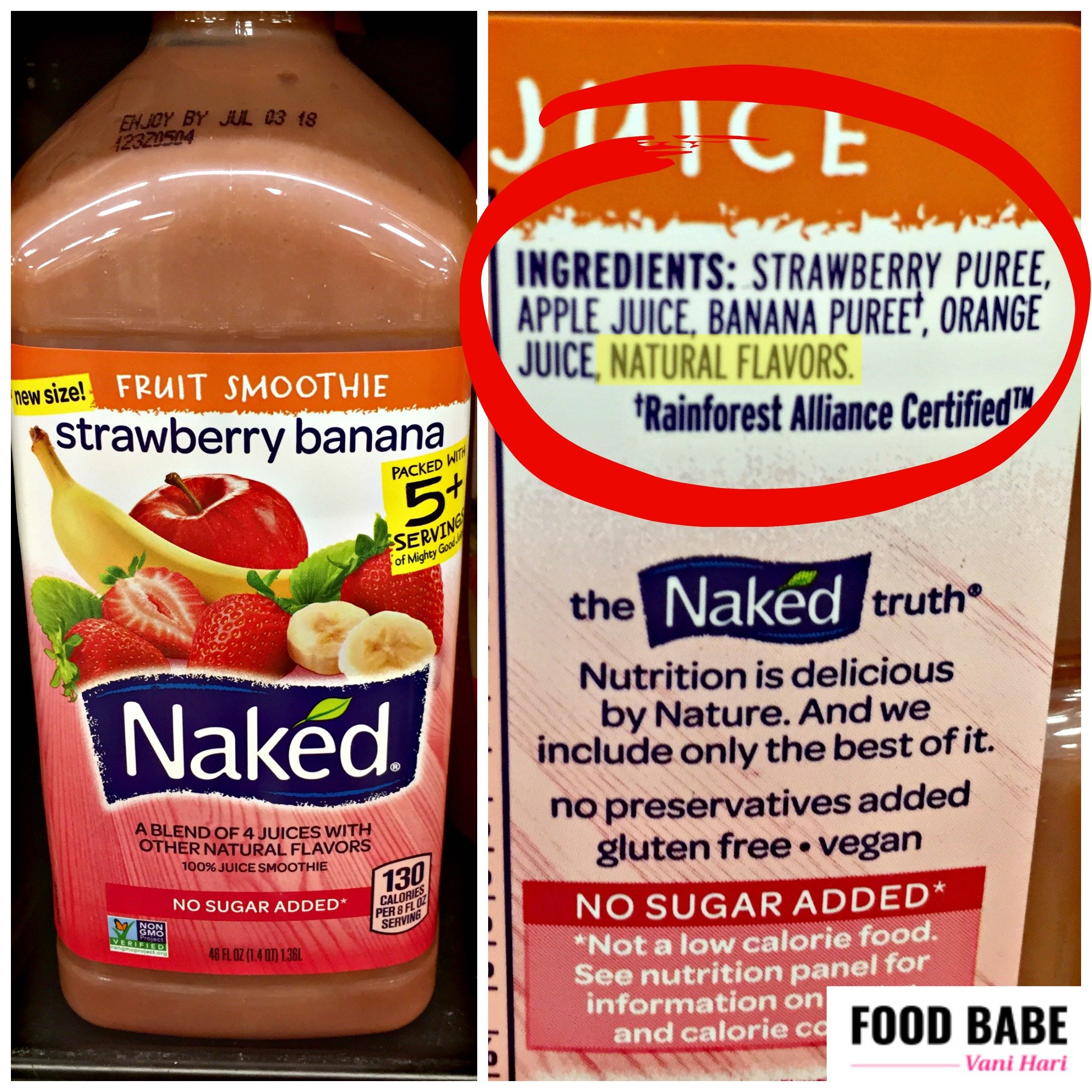
Natural Flavor is practically the exact same thing as Artificial Flavor, but it’s derived from substances found in nature (plants, animals, etc). So, the flavor is DERIVED from natural things, but it’s important to remember that this isn’t all it contains. Remember, flavors typically contain preservatives, emulsifiers, solvents and other “incidental additives”, which can make up 80% or so of the formulation. Some of the most common incidental additives in flavors include: sodium benzoate, glycerin, potassium sorbate, and propylene glycol (none of which are labeled).
Chemists create these complex formulations in a lab, isolating and blending specific flavors extracted from upwards of hundreds of compounds, some of which may be GMOs. These compounds can come from substances that are nowhere close to the actual thing. For example, they might take some castoreum from a beaver to make a flavoring that resembles a raspberry – without ever using any raspberries. But, hey, it’s “natural” because it’s from a beaver.

Natural “X” Flavor
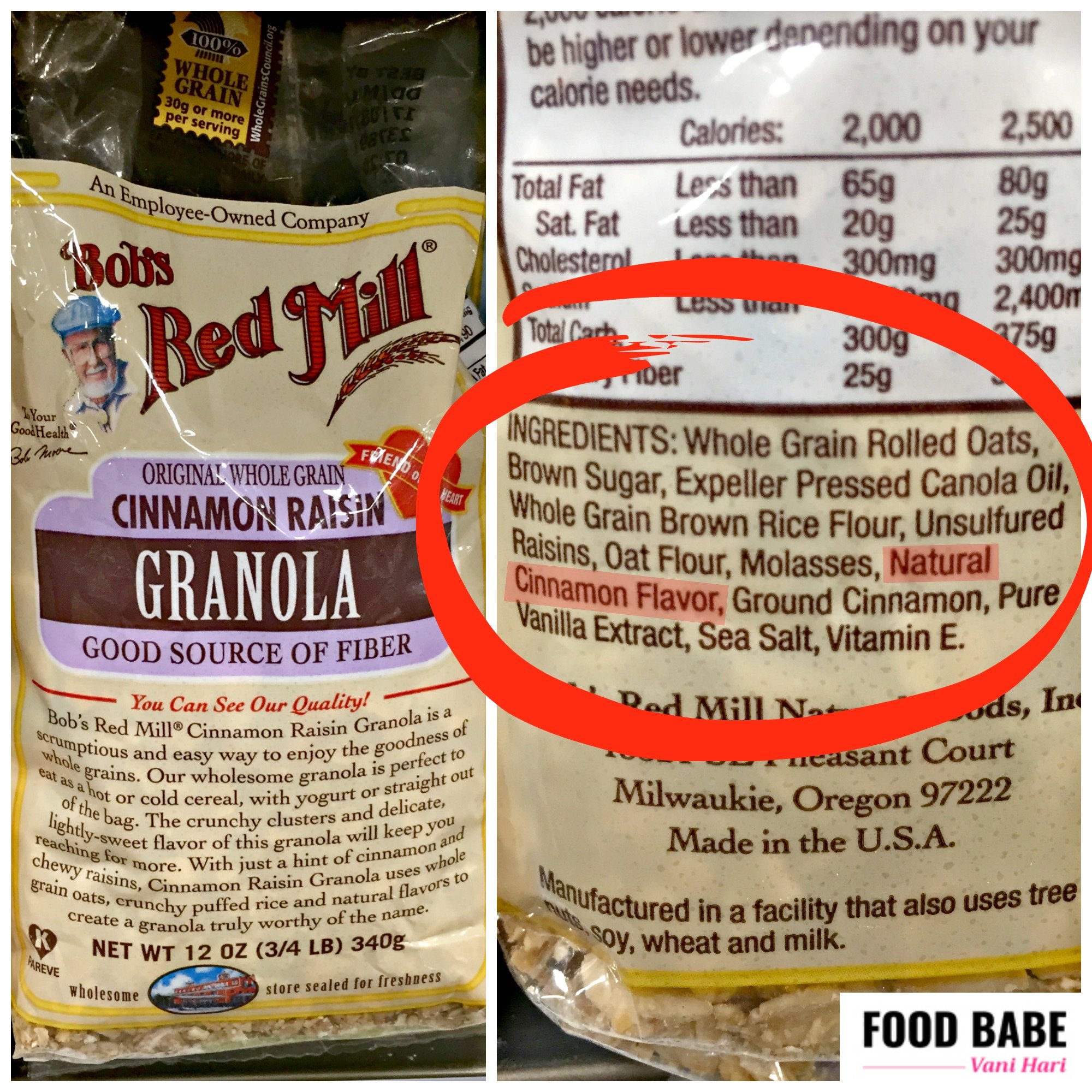
In general, if you see something like “Natural Cinnamon Flavor” this means that the flavor is derived solely from the named fruit, vegetable, animal or plant, which in this case is cinnamon. In other words, if you see “Natural Raspberry Flavor” on a product, the flavor didn’t come from a beaver, but actual raspberries. The reason food companies use this kind of flavoring is because it’s cheaper than using the actual ingredient in it’s raw form. The flavor also can be synthesized to be the best “one millionth” part of the taste of a substance – something definitely not found in nature. Incidental additives still apply, of course.
Natural and Artificial “X” Flavor
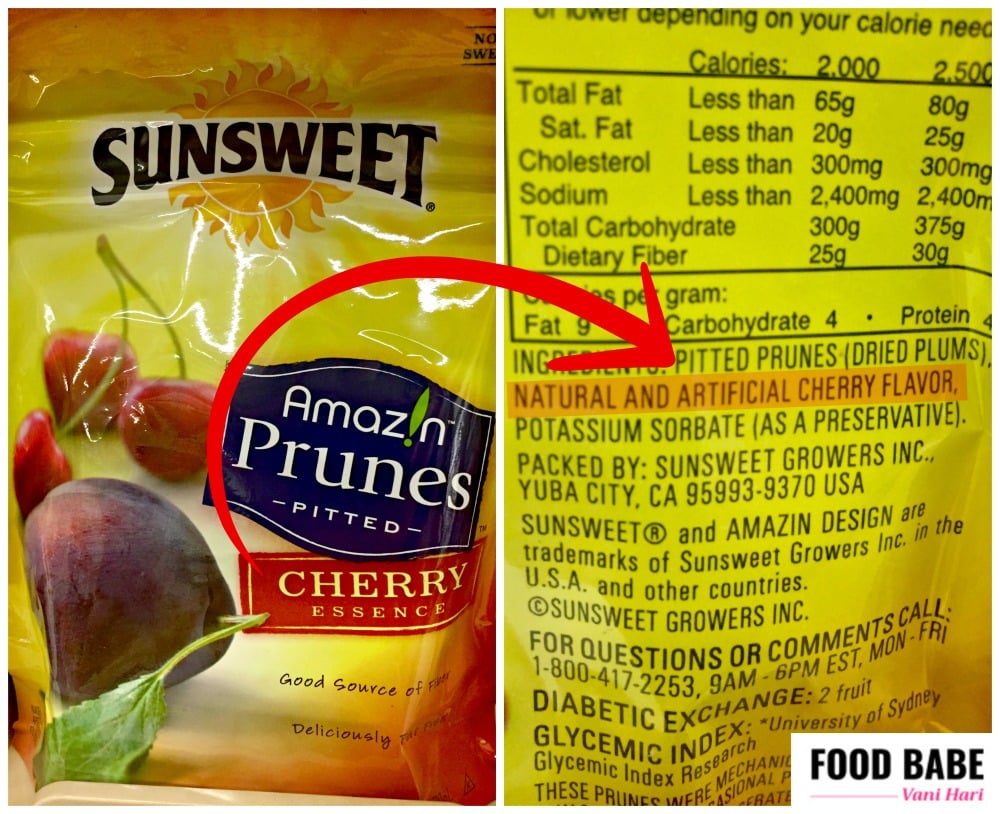
You’ll see a label like this when there are both natural and artificial flavors in a product. It doesn’t necessarily mean any of the named source (ie. a cherry) is used.
“X” Flavor, with other natural flavor

Sometimes on the front of a package you’ll see the statement “Raspberry Flavor With Other Natural Flavor”…which sounds redundant. This means the food contains a flavor derived from raspberries, but ALSO other natural flavors that don’t come from raspberries. This doesn’t need to be disclosed on an ingredient list, but is required on the front panel of package if they want to describe the flavor on the front.
Organic Natural Flavor
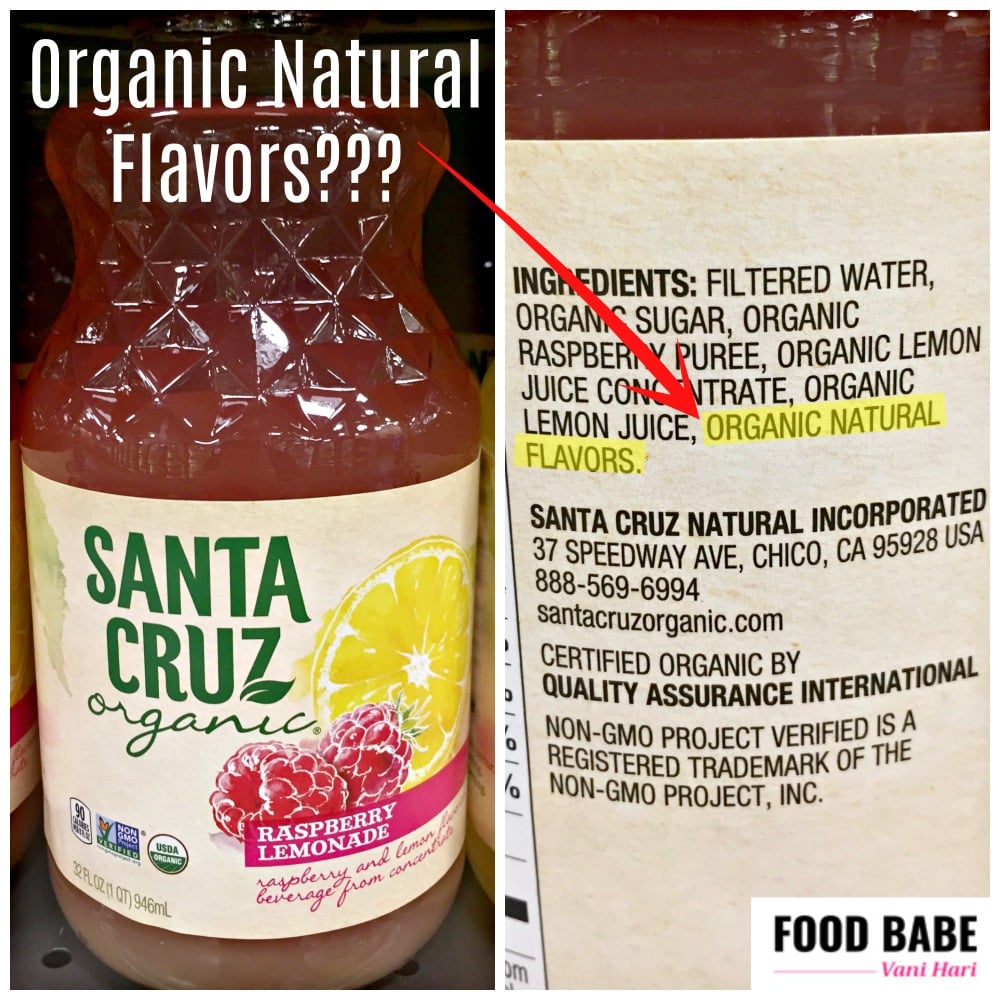
A lot of people have told me they’re surprised that organic foods can contain natural flavors. While it’s not ideal, at least “Organic Natural Flavor” is made just like other organic ingredients and needs to follow the same regulations. That means that organic flavors won’t contain synthetic solvents or preservatives, and no GMOs. Some the the “incidental additives” banned from organic flavors include propylene glycol, mono and diglycerides, BHT, BHA, and polysorbate 80.
Natural Flavors (in a “USDA Certified Organic” Product)

Sometimes you’ll just see “natural flavors” listed on a certified organic product (instead of “Organic Natural Flavors”). This means that the flavor itself is not organic, but it is compliant with organic regulations – such as no synthetic ingredients or GMOs. So, ultimately, these flavors will have a cleaner profile than the average natural flavor in a conventional product.
Natural Flavors (In a “Made With Organic X” Product)

In products that don’t carry the USDA Certified Organic label, but are made with some organic ingredients, they still need to use organic “compliant” flavors. This means the flavors in any product labeled as “Made with Organic” ingredients can only contain flavors that are compliant with organic regulations as far as no GMOs, sewage sludge, or ionizing radiation used, and also cannot contain synthetics or artificial preservatives. However, the flavors themselves do not need to be certified organic.
Natural Essences and Organic Essences
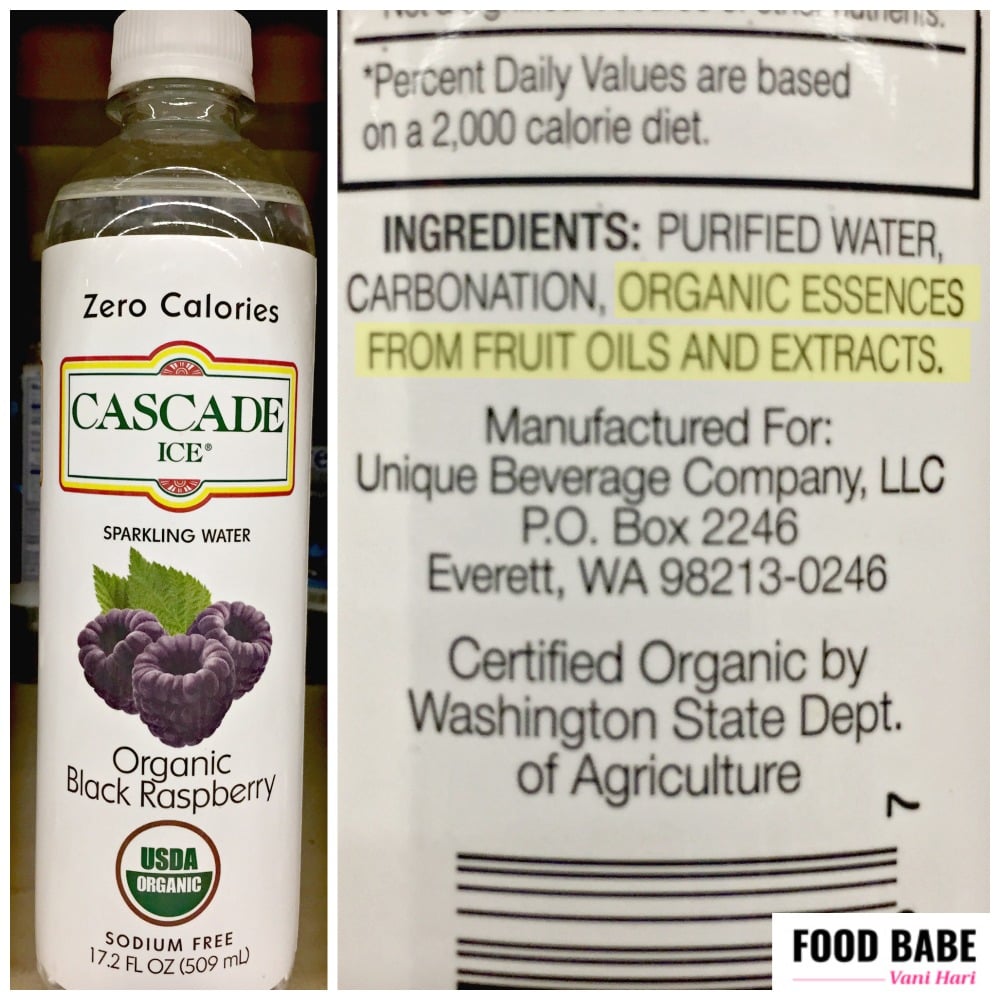 An essence captures the hint of flavor from a fruit or vegetable. To make a strawberry essence for instance, they may start with a strawberry juice concentrate and heat it to collect the steam and that becomes the essence. It should contain no additives or other ingredients.
An essence captures the hint of flavor from a fruit or vegetable. To make a strawberry essence for instance, they may start with a strawberry juice concentrate and heat it to collect the steam and that becomes the essence. It should contain no additives or other ingredients.
“X” Extract or Organic “X” Extract

An extract is as pure of a flavor you will get and the closest thing to real food. It’s similar to how you could make homemade vanilla extract by putting vanilla beans in an alcohol solution to extract out the flavor. Due to how extracts are produced, they can have some nutrients in them too. Organic Lemon Extract is derived solely from organic lemons and is in compliance with organic regulations (no GMOs, no synthetic preservatives, etc).
I hope this helps you sort out all the added flavors, essences, and extracts in our food.
Please share this post with all your friends and family, everyone deserves to know what’s behind these added flavors.
Xo,
Vani


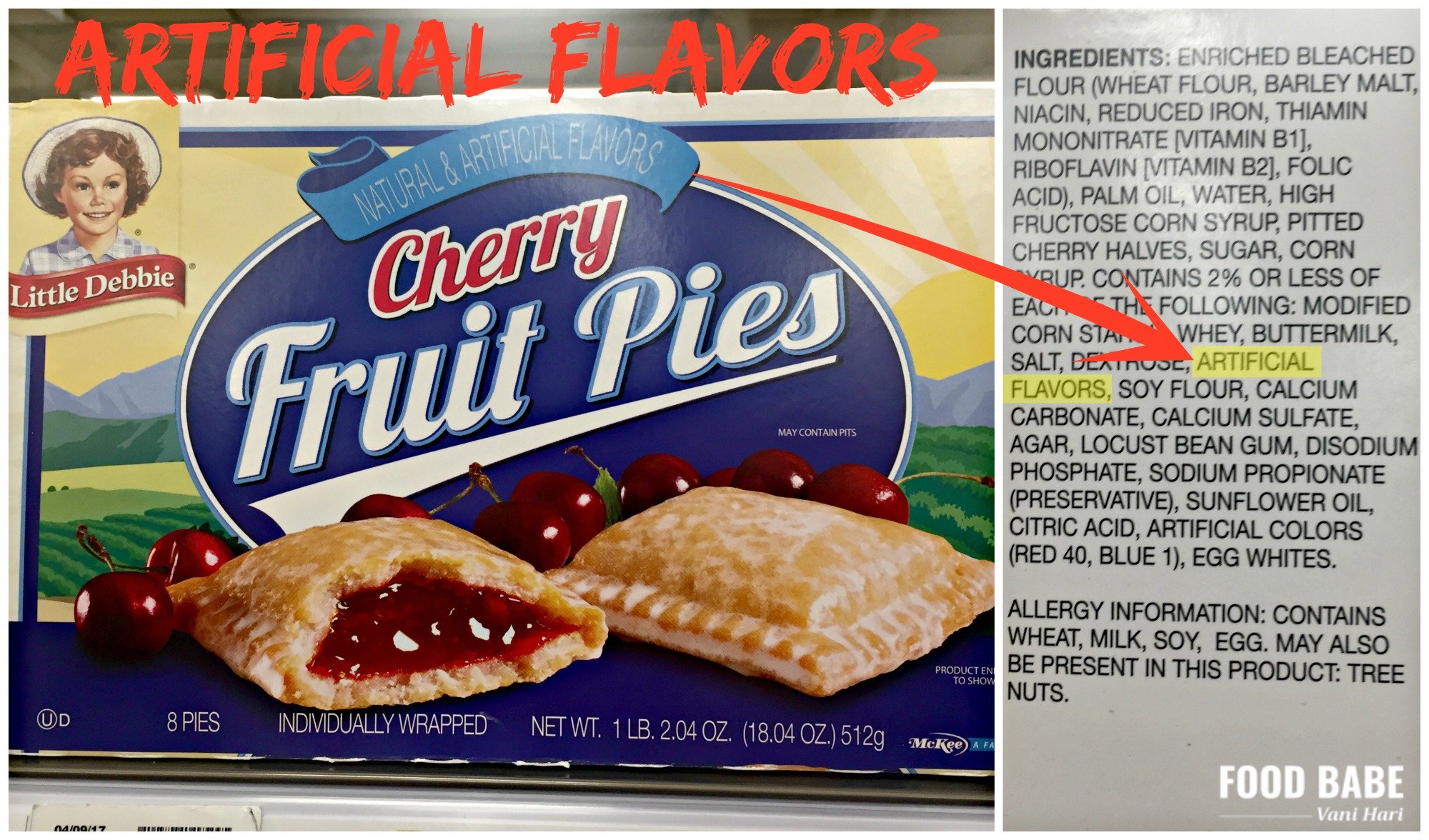

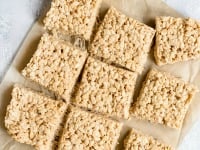




Wow!!!! Vani you REALLY did your homework as per Super-excellent on this topic. How brilliant!!! Thank you,thank you for waking us up and clueing the food babe army in on all the clandestine practices and hidden fluff.
Awesome job. From some other research I have done regarding natural flavors and artificial flavors, it is very similar to mono sodium glutamate which is basically free glutamic acid. The chemicals involved are basically excitotoxins and use your nervous system to send impulses to your brain that makes you think the food taste good.
Anyway, like I said great job. Keep up the good work
Vani, you’ve outdone yourself. THANK YOU. The last example with the lemon extract would not make it into my cart because of the next two ingredients, the guar gum and locust bean gum. But then again, I don’t have little kids clamoring for my attention and a complete dearth of time that creates a challenge in finding time for a shower. It’s easy to overlook stuff when there’s just no time. I empathize with my young friends who are running themselves ragged between work, home, kids, spouse, trying to have some semblance of a neat home, trying to find time to make DIY sorbet etc etc. WHAT YOU’RE DOING IS EXTREMELY VALUABLE AND YOU’RE AMAZING!
Does industry have choice for all flavor to use extract or essence and avoid reaming categories ?
Vani, this has happened to me on occasion as well. I’ve been following a healthy lifestyle for a lot of years, but as careful as I am, a few times, like you, something slipped in without my noticing. When you are used to a familiar product, you don’t feel you have to read the ingredient list every time.
Our favorite grocery store did just start carrying 2 other brands of yogurt that are far above any other, (organic, grass fed, etc.) but the price is also far above. The only choice I had before that I bought occasionally (for the starter) was Stonyfield.
A few years ago I started making my own raw yogurt, so now I know what’s in it.
Thank you for all your hard work! You are appreciated.
Thanks so much for this breakdown!! While I’ve been aware of most of it, I have questioned “natural flavour” …thank you helping me out on this!! You are incredible.. 🙂
What Healthy Yogurt do you recommend?
Thank you
Hi Doreen! Check out this post on yogurt brands: https://foodbabe.com/yogurt/
Thank you
Most “synthetic vanillin and ethyl vanillin is made from a very natural source, wood pulp. It turns out that the lignin that holds the fibers together is a natural polymer that can be broken down chemically into a rich source of vanillin and at very low cost as the lignin is a by product of paper making. Real vanilla extract price has gone through the roof with a single 16 oz bottle selling for upwards of 50 dollars. When you realize it is the single most popular flavor and scent, well that makes the case for synthetic vanilla esters open and shut. Food companies just can’t afford to source real vanilla extract as the beans are just too rich in price. Once a company switches sources for cost reasons they never go back.
I would be much more concerned about the health impacts of eating ANY highly swetened yogurt or fruit juice regardless of use of organic cane juice or high fructose corn syrup. They are ALL empty simple sugar filler calories. Make your own yogurt from organic milk and add frozen whole berries or cut up fresh fruit and skip all that extra sugar. Do you know why these artificial and natural flavors are so low on the ingredient lists in commercially prepared foods? Because they only add a tiny amount to each container so the cost is extremely low per serving and yes they do taste too strong and off compared to real fruit. Food companies make products that are perfumed with artificial and natural flavors so even people with damaged scent and olfactory nerves can smell them. What causes all this damage to our noses? Too much natural and artifical scents in consumer products and continuous over exposure to them.
Many people have allergic reactions to imitation vanilla, best to avoid. Also best to avoid all store bought yogurt. Its all crap, make your own
I would just like to point out that with your diet ice tea example above – NEVER buy anything with aspartame in it. Anything else on the ingredient list is of no concern when it has the bio-toxin aspartame in it.
Thank you for the wonderful tutorial on flavors. In general, I just avoid all that by making my own. It’s really easy to make your own yoghurt, and then control what flavors go into it (I make a puree out of frozen, or fresh, organic fruit, and maybe a little honey, stevia, and cinnamon). And I find kefir even easier to make at home (once you get some starter kefir grains – basically put starter in a quart jar, add milk, stir, let it sit at room temp for 24 hrs with breathable cover, then strain off finished kefir, and repeat). It’s also much cheaper to make my own kefir – a gallon of organic milk at Trader Joes is about $6. A quart of organic kefir is usually about $6 – so I quadruple my money. Kefir is not only easier than yoghurt to make, but also has a LOT more probiotics. How-to instructions can be found on this website (and many other websites and cookbooks): https://www.culturesforhealth.com/
I have never seen a flavored yogurt without some kind of “natural flavor” – which is usually why I avoid yogurt altogether because I like it sweet and adding honey doesn’t cut it. Another failure of mass produced food industry.
Be careful of juices as well. Many now have added flavoring – even the supposed 100% Fruit Juice in the shelf stable area or cold juice zone. So angering because I wanted a multi all fruit juice to make my own frozen fruit bars – and guess what? They ALL had natural flavor added! Plain orange juice was the exception.
Another caution: “Whole” fruit bars and Outshine Fruit Bars have completely changed their ingredients. If you ever wondered why they are both gummy, that’s because they have massive amounts of gums added, some with corn syrup and flavorings. What used to be a refreshing and somewhat healthy all fruit bar, is now just frozen frankenfood on a stick. And yes, even the organic ones have corn syrup and gums. Organic does NOT always mean wholesome or healthy. Gums are being added to everything as a replacement for REAL food. Don’t assume you’re once beloved food item is the same, check the labels.
Outshine Strawberry Fruit Bars:
Strawberries, Water, Cane Sugar, Citric Acid, Guar Gum, Carob Bean Gum, Ascorbic Acid (Vitamin C), Strawberry Juice from Concentrate (Water, Strawberry Juice Concentrate), Natural Flavor, Beet Juice Color, Turmeric Oleoresin Color.
Whole Fruit Fruit Bars Organic Strawberry:
Water, Organic Strawberries, Organic Sugar, Organic Corn Syrup Solids, Organic Natural Flavor, Red Beet Juice Concentrate, Citric Acid, Organic Guar Gum, Xantham Gum, Annatto.
Thanks for this great investigative article! I recently discovered the castoreum- natural vanilla flavoring connection when I was trying to get to the bottom of why my daughter was breaking out in hives when eating foods with natural vanilla flavoring on the ingredients (foods that used to not bother her!). Turns out she is allergic to castoreum, not real vanilla. That just means more homemade foods now… starting with yogurt. Keep up the great work getting to the bottom of what’s in the foods we eat.
This article is excellent — so incredibly helpful. I’ve always known you to be critical of natural flavors but until now didn’t fully understand why. Thank you!
Sooo, if regulations on organic foods prohibit sewage sludge (referenced a few times in this article), does that mean non-organic food can legally be tainted with, well, you-know-what? :-O
Hi Nancy! Great question. Yes, “biosolids” may be used as fertilizer on conventional crops (even non-GMO). You can learn more about that in this post: https://foodbabe.com/difference-between-organic-non-gmo-labels/
And then there is the “interesting” slippery slope of providers of raw “natural flavors” for food producers.
I attended a “Sustainable Foods” conference in Silicon Valley which was basically a conference on how to message to Millenials so they would buy the product. It was NOT about sustainable food, regenreratively raised or produced food…just make your “story” compelling enough to capture the Millenial market.
It was awful.
And yes, I told them so, as I am wont to do.
Givaudan was one of the presenters. When I asked the speaker if their vanilla was from Synbio, he answered no, but they would consider it.
After the talk, another rep from the company came up to me and said that the speaker was “not the best person to answer my question.” She told me that they do use Synbio vanillla. When I asked her if she was honest with her customers about what they did, she said ” we tell them it’s NonGMO but would not pass the Blue Butterfly certification.” When I suggested that this was unethical and, basically, a lie, she said that the US government did not consider it GMO so it was legal.
How can we know what’s in the food if the natural flavor providers aren’t honest with their food producer/customers, even if those food producers are trying to do the right thing?
1. Eat food.
2. Don’t eat food products.
3. Realize that “Food Chemist” is a profession, a profession of deception.
What kind of yogurt do you recommend eating?
Hi Paula! See this post about yogurt: https://foodbabe.com/yogurt/
All of these lies bother me and I hate the idea of eating synthetic formulas, but can the food army help get rid of photos on food packages that show ingredients which are not in the package? I recently got a bag of Philly Cheese steak sandwich fillings but they had no bell peppers or onions in the bag … just flavored meat which really ticked me off! I feel like I’ve been food molested!!!
What about SynBio flavors? (Synthetic biology?) These are made by taking a part of an organic fruit, for example, and manipulating it in a lab to make a flavor that can be called organic.
I always avoid these in foods. Another thing I avoid is all those concentrates in foods as well.
What about La Croix? The description says “naturally essenced,” but the label lists “natural flavor”?!?
Thanks for this awesome post!
What are god thoughts in la cruix waters. Should we stay away since they are all made with “natural flavors ?
Vani rocks! We need more people like Vani. I aspire to know as much as she does about what’s going on in the food industry so I can make the best choices about what I eat and influence those around me that also want to learn.
Yes it helped me very very much thank you
I was given magnesium citrate to take and in the ingredients it said organic natural flavors. I know that they hide so many things like MSG or artificial flavors and so many other things when they put natural flavors in the ingredients.
When it says organic natural flavors do I need to worry about MSG, any kind of soy, any artificial sweeteners, any gluten, and what else could be listed in there that I would have to worry about? I ask because I have bad sensitivities to all of these things and I don’t want any bad ingredients going in my body.
So thank you very much for getting back to me and letting me know what could ingredients could be hiding when they say organic natural flavors. Thank you so much.
This is exactly what I need to know. I cannot consume msg, or msg under any of its 100 other names. Is Organic Natural Flavors safe to eat? What’s in it and not in it? Anybody know? Thanks@
I used to get this one cereal that was USDA certified organic and used organic blackberry, strawberry, and raspberry flavors. Even though they already added freeze dried strawberry and raspberry powders they still added organic flavors. It was quite an addicting cereal and I had to have several bowls a day which resulted in a couple of boxes a week.
Another USDA certified organic cereal, well two actually, both were chocolate ones and used fair trade chocolate/cocoa powder- however also added natural chocolate flavor and were also addicting.
Considering at 8g of sugar and 9 and 11g of organic cane sugar per serving and was the 2nd or 3rd ingredient listed in them- was even worse of an idea.
The good thing though, it’s been about a year and a half or two before I last ate them.
thanks so much for your info…. I have an automatic detector system… If I eat anything with natural flavor, I get bad headaches. It is so difficult to tell which is which, especially if I go out to eat, which I love to do. I am so sick and tired of having to be a watch dog.
The bad thing is it is like a caffeine withdrawal headache, nothing I can do will take it away.
Can i know what common ‘natural flavours’ they use in Hazelnut sauce and Coffee topping sauce ?
OMG, since I learned about “natural flavors” from Vani years ago. I have been looking closely and I fine it many healthy ingredients. I am a health coach and this never came up in my training. Blue Diamond Almond Breeze unsweetened almond milk has listed natural flavors and natural vitamin E, which is a question – natural vitmin E? Pacific Foods – Hemp unsweetened, lists natural vanilla and other natural flavors!! These have been my go-to for protein smoothies. Trader Joe’s offers a Oak milk with NO natural flavors. Looking for other recommendation for clean – nut milks. This is so wrong, I am so on board with Vani and her wonderfrul practices… I am about to quite my job and dig in and spread the word about healty practices.
Have you tried MALT almond milk? Very clean and Vani has mentioned in the past.
I’m confused so is organic flavour safe to consume? Do you consume it? Also what do you think about this company’s response when I asked them about natural flavor in their product?
:Thanks for reaching out! While natural flavors might be crafted, tested and perfected in a lab they are in fact derived from real ingredients – fruits, vegetables, herbs and spices. We do not use artificial flavors or any synthetic colors in PeaTos products. We have always been focused on making the most delicious snacks with the highest quality ingredients possible, and continue to innovate as new advances in science and technology make that possible.